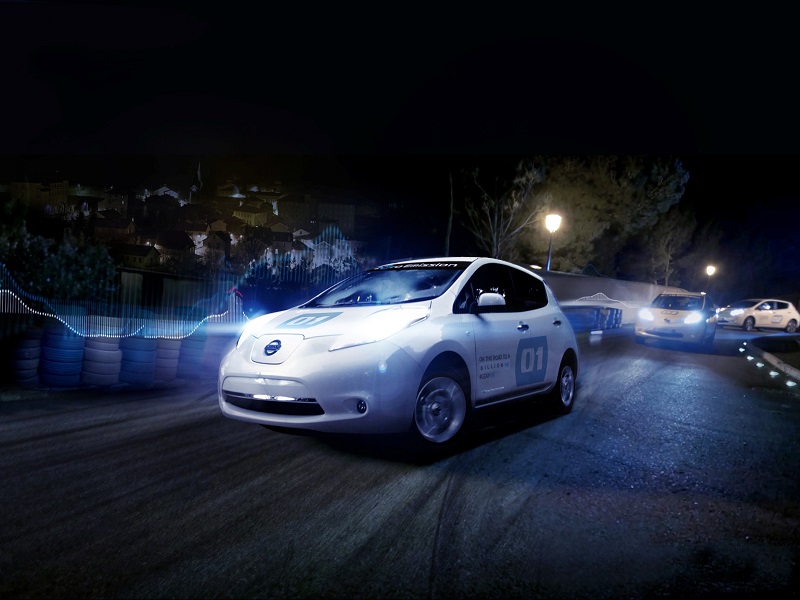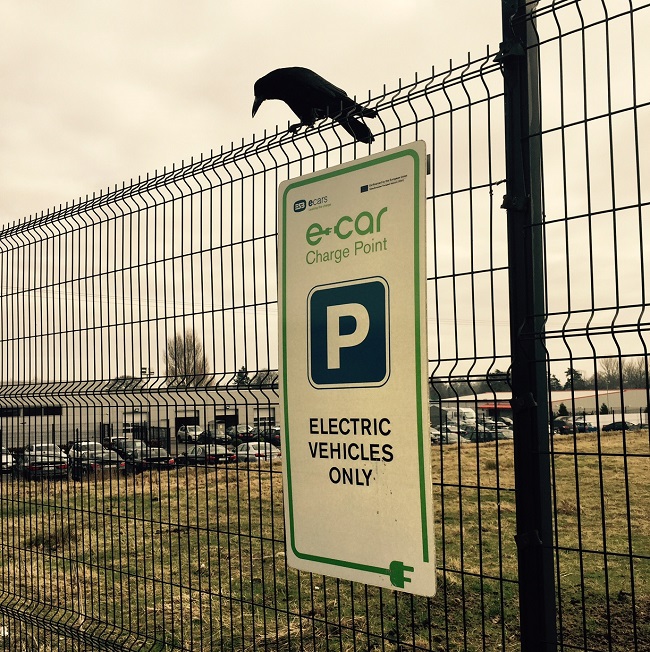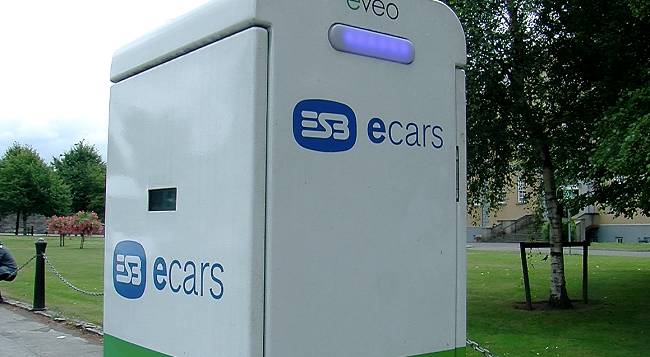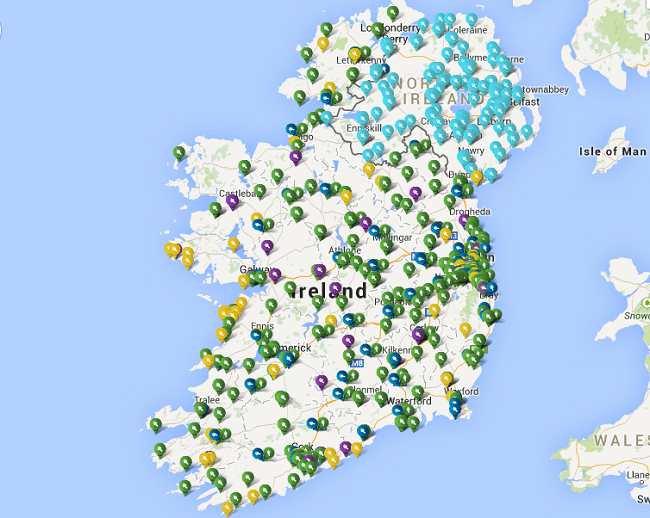With Tesla’s electric vehicles (EVs) garnering more attention than EVs ever have before, EVs in Ireland are still seen as being in their experimental stage. What is it actually like to own one in the country?
Since I’ve been testing EVs for Siliconrepublic.com, it’s been a rather interesting ride to say the least, and there’s no pardoning of that pun in this case.
Moments of amazement at their high rate of acceleration, quietness and ability to raise intrigue are balanced with constant looking at your battery gauge, struggles to find a charging point that hasn’t been blocked by a fossil fuel-powered car and a sense that turning your heater up to the third bar could be the deciding factor in whether your car’s battery is going to make it home or not.
Of course, the current generation of EVs have come a long way in the last number of years and, as mentioned before, the likes of Tesla are doing a damn fine job in making EVs appear cool, where once they were considered a pie-in-the-sky dream that could never replace the 100-year-old engines that are powered by dinosaurs’ remains.
Incentives galore
Certainly, from an Irish perspective, the current Government and electricity provider ESB are making it rather attractive to those looking to buy a new car to go green, and not just from an environmental perspective, but also in terms of their wallet.
No other type of vehicle on the road is as subsidised by the Government as EVs are.
Just for owning one of the 10 currently on the market, an EV buyer gets €5,000 knocked off the price with the help of a grant from the Sustainable Energy Authority of Ireland (SEAI), no vehicle registration tax (VRT), and free public charging (for the time being), all of which is almost a necessity given the, quite frankly, high costs of EVs currently.
So why is the Government throwing money at consumers to make the EV switch? It’s quite simple; Ireland has made some bold promises and it’s desperate to keep them. As a nation, it is one of the lowest buyers of EVs in Europe and in 2013, only a little more than 50 EVs were sold in the entire country. Despite this, Ireland did see a 200pc rise last year with 256 sales recorded for 2014.
And yet here we are in 2015 and the Irish Government has put in place plans to magically have 250,000 EVs on its roads in five years’ time, which is ambitious, and arguably foolish, to say the least.

The Nissan Leaf is Ireland’s most popular EV by a considerable margin. Image via Nissan
Charging availability, to a point
Certainly, at the moment, ESB Networks has established a charging point network that from the outside appears to more than meet the needs of the current number of EVs, with nearly three points in the country for every car.
Of course, if there is to really be some evangelical moment where every person suddenly decides to trade in their car for an EV, there would need to be significant upscaling of the network.
The man at the helm of expanding Ireland’s EV charging infrastructure is Donal Herraghty, technology and programme manager at ESB eCars. He said Ireland lays claim to being one of the best supported EV infrastructures not just in Ireland, but the world in terms of fast DC charging, which is vital to the country’s view of making EVs a mode of national transport,.
“A lot of countries tend to start offering EVs, giving out a load of incentives and then trying to meet demand as it comes. We wanted to make sure people could travel around the country and have access to public infrastructure as well as in their own home,” Herraghty said.
“The idea is that you could travel from Dublin to Galway and every 60km you’d have a fast charger.”
From my own experiences, I had little to fault the system that is in place, with each charger performing as expected, much to the relief of someone with crippling ‘range anxiety’.
But I’m just someone who tests the cars, what about someone who drives one every day?

An ominous message as I charged my Nissan Leaf in Cahir, Co Tipperary
ICEd to meet you
“Where the ESB is concerned, I personally feel that they’re doing good work, but that’s probably not a universal view,” said Frank Barr, chairperson of the Irish EV Owners Committee, an organisation set up by Irish EV owners to lobby the ESB for improvements, as well as giving suggestions.
“I don’t think many appreciate it, I certainly do, but this is all very, very new technology. There are going to be little gremlins in there and they need to be ironed out, but they have been ironed out and some people disagree thinking the ESB could be more pushy about it.”
It would be a bit of an understatement to say that views are polarised when it comes to how ESB Networks is doing, having personally received dozens of emails from various Irish EV drivers, but one thing certainly unites people in their unhappiness with public charging: being ‘ICEd’.
Using the acronym for ‘internal combustion engine’, the terms refers to when a regular car is parked in one of the bays left for EVs to charge, or as the problem has been, the lack thereof.
Up until the last few months, car park spaces beside charging points were fair game, and still are in some cases, which leaves many EV drivers tearing their hair out as they then attempt to find the next-nearest charge point.
Even yours truly had an experience where a person swung into the only available space as I was about to park and after telling them this was effectively my petrol station, the person told me where to go, in a series of rage-inducing expletives.

A standard AC charge point opposite Hueston Station, Dublin. No designated parking space is currently marked here
Waiting with bay-ted breath
Thankfully, Herraghty said this was heard loud and clear and steps are now under way to solve this.
“One of the things we’re about to start trialling at the moment with Cork City Council is painting the parking spaces with ‘EVs only’ and it will be illegal to park there. That’s the message we’re going to have to get across over the next few months that with the rolling out of this in urban areas and public sites, the local authorities will be enforcing this with parking enforcement officers and parking wardens.”
This is easier said than done, however, something which Barr feels needs to be done through greater awareness that has been done for other parking bays.
“Once people start getting tickets or start getting clamped, then it will be successful. That’s what we’re looking for, that it will be the same as disabled bays,” he said.
The other issue that gets raised on occasion is the charging points themselves and the maintenance that comes with them, something which Herraghty said is monitored 24 hours a day and can be responded to remotely on some issues, say, if there is a software issue that needs to be rebooted. Herraghty also said it’s protocol to send someone out within three hours.
However, I’ve heard a number of anecdotes from Irish EV owners who have told stories of charging points being down or not functioning properly being more common than reported, which haven’t been updated to show on ESB’s EV charge point map, the go-to source of the live status of Ireland’s charge points.

A map of Ireland’s current AC (green), DC fast-charging (blue), hotel charging points (yellow) and ones that are out of order (purple)
Capturing people’s imagination
One thing that remains certain however is that EVs are beginning to catch the imagination of the general public as every time I stopped to charge the car, I’d have someone come over to me asking a range of questions on range, efficiency, etc, simply because there remains little knowledge of it outside of a small Irish community.
This is something, Herraghty said, is being addressed through old media, new media and social media, but from what it looks like to me, and seemingly from EV drivers, is that if we are to get more EVs on the road, it needs to be encouraged not just from the ESB or the Government, but through companies and the people themselves.
“The public infrastructure is expanding fast but I think it will need more investment from companies,” said EV driver Jan-Bart Spang. “I think most people would be fine with an EV if they could charge at work. More could be done on incentives like free access to bus lanes, road tax, tolls, VRT discount, etc. This would give people something to think about.”
In the meantime, it is clear Irish EV owners are clearly fans of technology given their work in establishing portals such as evFirst (login required) which gives live statistics and info for EV drivers on charging points, as well as offering the latest news and events.
What is certain is more EVs are entering the market than ever before, and the issues that EV drivers currently face will need to be addressed if the Government is to actually get anywhere near the 250,000 cars it wants in.
As Barr elaborated, “When I joined the (Irish EV Owners) site, there was maybe 20 members, but I think we’re approaching 400 members.”
As Fianna Fáil’s regularly mocked slogan said, it appears there’s “a lot done, more to do”.
EV charging image via Shutterstock